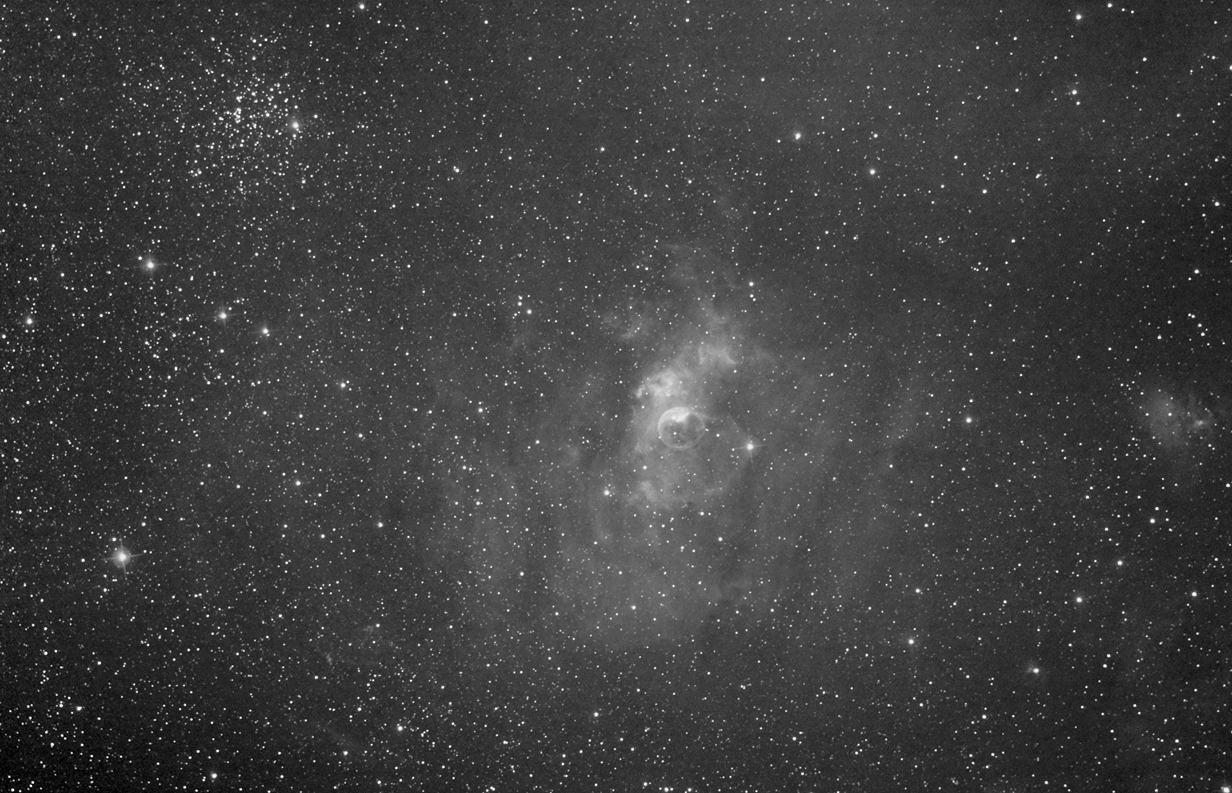
|
La nebulosa Bolla
(NGC 7635) con la nebulosa SH2-159 e l'ammasso aperto M52 (NGC
7654) The Bubble nebula (NGC 7635) with SH2-159 nebula and the open cluster M52 (NGC 7654) Center frame on A.R. 23h21m00s - Decl. +61°09'00" Alta Risoluzione - High resolution Alta Risoluzione in negativo - Negative high resolution |
|
Questa foto della nebulosa Bolla in Cassiopeia (NGC 7635)
con l'ammasso aperto "sale e pepe" (conosciuto anche come M52 o
NGC 7654) e la nebulosa SH2-159 (sul bordo destro) è stata scattata
nelle notti del 16, 17, 18, 19 e 20 agosto 2011 da Arcidosso (GR)
al fuoco diretto di un telescopio newton Altair Astro da 8" f/4 su
montatura Gemini G41 Obs con FS2. La foto è la somma di 57 esposizioni da 12 minuti cadauna, per un totale di quasi 11 ore e mezza, con una fotocamera digitale Canon Eos 40D con filtro modificato, settato a 800 ISO, e usando un filtro Astronomik Eos clip Halfa da 13 nm, che sono state effettuate con inseguimento mediante rifrattore 102/500 in parallelo e autoguida Atik IC-16. Successivamente i frames sono stati calibrati con Deep Sky Stacker mediante 53 dark, 62 flat, 62 dark di flat, 62 bias, sommati con Registar, separazione del singolo canale rosso, e processate mediante compositazione, applicazione di maschere passa basso, maschere sfuocate, riduzione del rumore utilizzando i software Pixinsight Le e Photoshop. This photo of the Bubble Nenula in Cassopeia (NGC 7635), with the Cassiopeia salt and pepper cluster (also known as M52 or NGC 7654) and the SH"-159 nebula at the right edge of the picture, was taken on the nights of august 16, 17, 18, 19 and 20, 2011 from Arcidosso, near Grosseto, in Italy, at the prime focus of a newtonian Altair astro 8" f/4 telescope using a Gemini G41 Obs mount with FS2. The photo is the sum of 57 frames, each of 12 minutes, for a total of almost 11 and half hours, with a Dslr camera Canon Eos 40D (filter modified) and an Astronomik Eos clip Halpha 13 nm filter, exposed at 800 ISO, taken with a Atik IC-16 autoguide on a refractor 102/500. Then I calibrated the files with 53 darks, 62 flats, 62 dark of flat, 62 bias, using Deep Sky Stacker, I summed them with Registar, splitting the RGB channels using only the red one, and processed the files, using low pass masks, unsharp mask, noise reduction, using Pixinsigh LE and Photoshop |